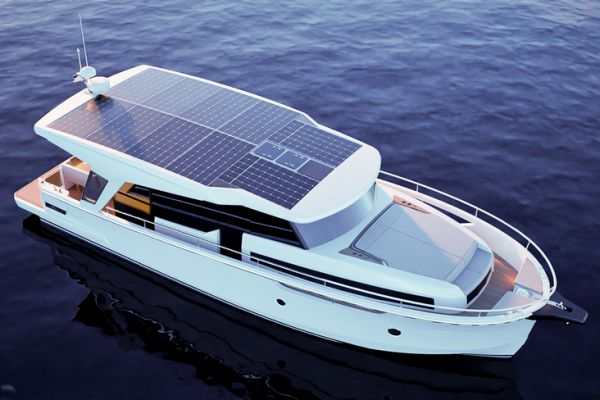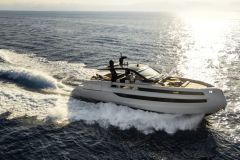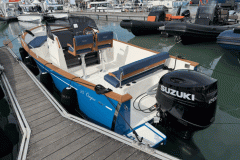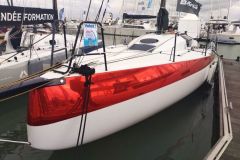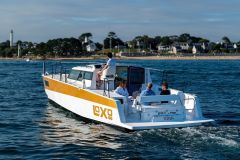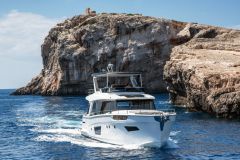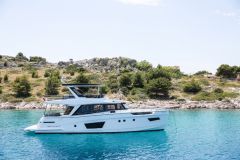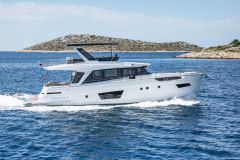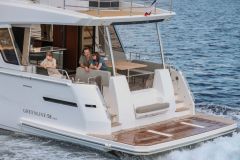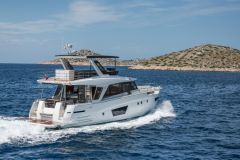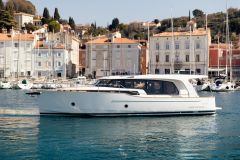Among the announcements expected at the Düsseldorf Boat Show in January 2026, the Greenline 42 is already attracting attention. Designed to fit between the Slovenian manufacturer's 39 and 45 Fly models, it combines technical choices with advanced customization options.
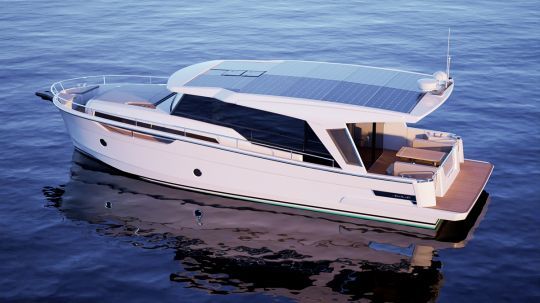
An intermediate model
At 42 feet (approx. 12.80 m), this new model joins two well-established models in the range. The aim is to offer a compromise between living space, maneuverability with a small crew and energy autonomy. The Greenline 42 is claimed to have a top speed of 25 knots, clearly positioning it in the fast semi-displacement cruiser segment.
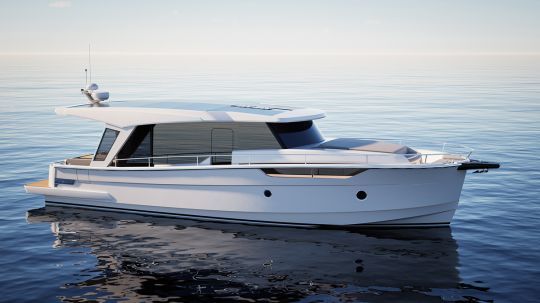
Its optimized hull is designed for stability at moderate cruising speeds. This choice suggests essentially coastal use, or even semi-offshore use in the Mediterranean or North Sea. The deck layout features two distinct outdoor living areas: a modular aft cockpit and a classic but pleasant forward sundeck.
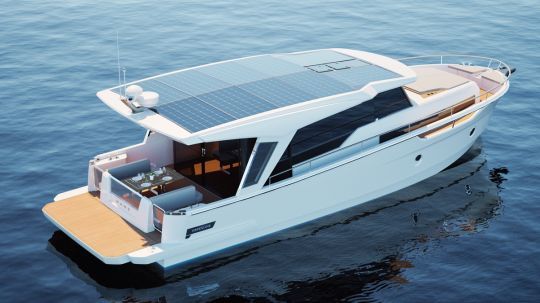
A large solar installation
One of the arguments put forward is its energy production capacity: up to 4.3 kW thanks to ten solar panels. In theory, this means that all on-board systems (fridge, lights, converters, etc.) can be powered without the need for a thermal generator. In practice, this power will only be sufficient if consumption is rigorously controlled, particularly for air conditioning...
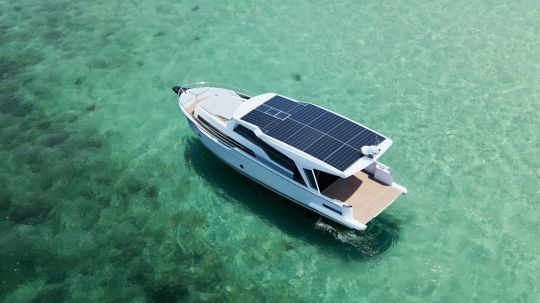
For those who like long anchorages, this is a plus. Integration with the 6th-generation H-Drive motor system also enables maneuvering in port in all-electric mode, without noise or smoke. A useful function, but one that complements diesel propulsion for longer voyages.
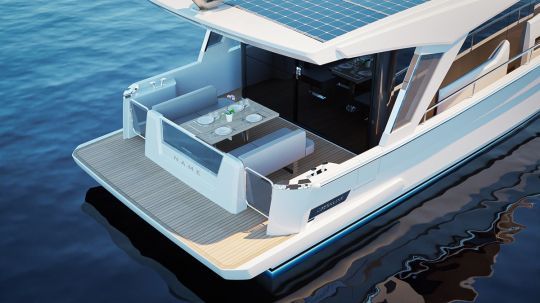
A convertible cockpit
The rear of the boat can be configured in two ways: with a fixed bathing platform and bench seat, or with a vertically folding hatch and removable furniture. This choice allows you to adapt the cockpit to your specific needs (lounging, dinghy, fishing, swimming). But these modular configurations also raise questions of ergonomics and on-board storage of dismantled components.
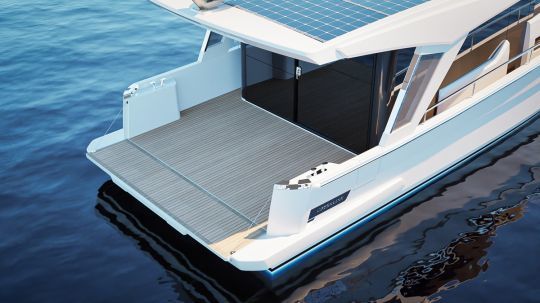
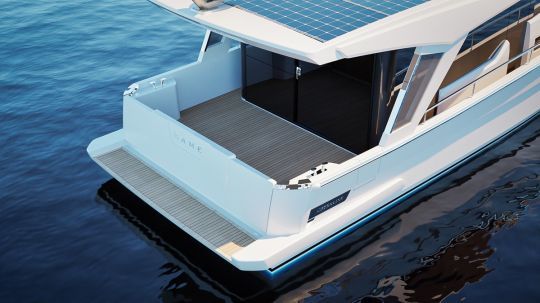
You'll need to assess how easy it is to install on site. This type of layout is tempting to optimize dock space, but can quickly become restrictive if the systems are heavy or cumbersome.

Long-term construction choices
Greenline takes an eco-responsible approach to the entire production chain. This involves vacuum infusion lamination, vinyl ester resins (guaranteed for 5 years against osmosis), and reinforcement with recycled PET foam. The site is also experimenting with natural fibers and "green" resins on certain components.
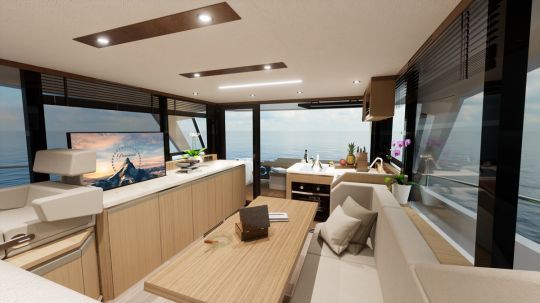
The objective is realistic: to increase the boat's durability, while controlling waste. Wood scraps are recycled as heating pellets, and foam is reused for home insulation. A good point for the shipyard.

How far does personalization go?
The shipyard is showcasing customization options never before seen on its previous models. Cabins, bathrooms, furniture, worktops, appliances - everything can be adjusted according to the owner's wishes. Two interior ambiances are offered, designed by Marco Casali.
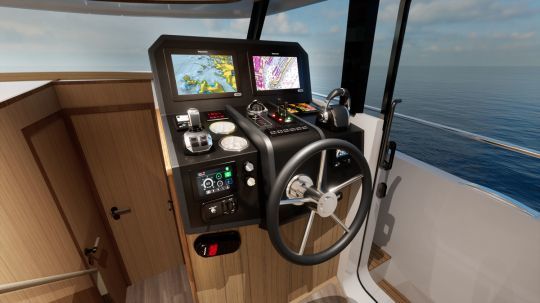
If this flexibility is accompanied by good workmanship, the boat can be adapted to a wide range of sailing situations, from summer coastal cruising to semi-permanent cruising. It remains to be seen how long production will take, and what additional costs will be generated by specific requests.

 /
/ 